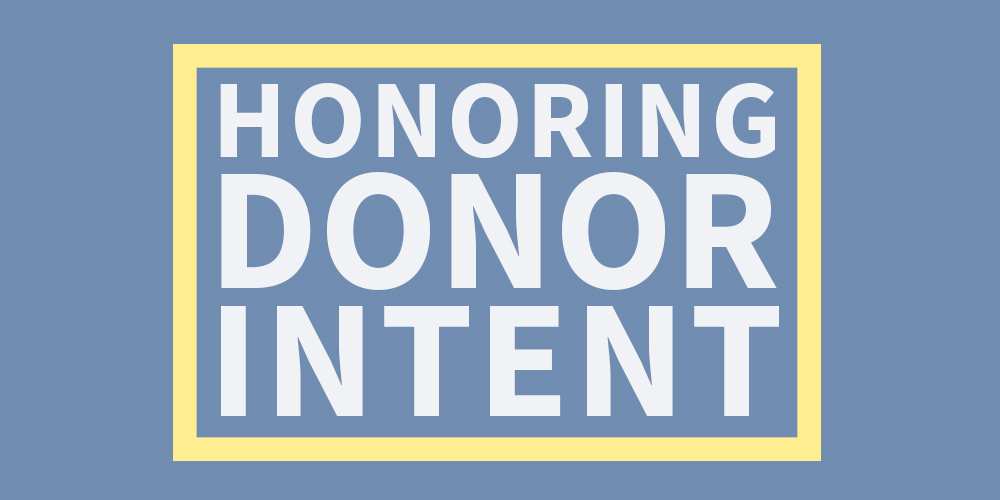Today’s donors are more independent, more engaged with how their gifts will be used, and more demanding about how nonprofits treat them and their contributions.
At one time, donors trusted nonprofits “to use their gifts for the greatest good.” Today, donors are more discerning. Some expect their contributions to make a difference that can be verified by measurable impact. Others ask for facts to substantiate efficiency and effectiveness. Most expect that nonprofits will provide excellent stewardship and use gifts as their donors intended.
While lawsuits are still quite rare, high-profile cases, such as the suit filed against the University of Chicago by the Pearson Family Members Foundation, center around whether or not a nonprofit is using gift money according to donor intent.
How can nonprofits ensure that they understand and honor donor intentions?
Building a relationship with the donor based on trust and shared values is essential. Exploring donor intentions is part of cultivation and solicitation. Before finalizing any gift, a nonprofit should know the answers to such questions as:
- Why is the donor making this gift?
- What impact does the donor expect the gift to have? Over what period of time?
- How will this impact be documented?
- What are the donor’s values that underlie making this gift?
- Do they complement the values of the nonprofit?
- How does the donor expect the nonprofit to manage this gift over time, especially if it is to be used as endowment?
- What kind of publicity, if any, does the donor expect?
- What types of alternative uses will be acceptable if the initial intended use is no longer applicable at some point in the future?
- What kinds of reports will the donor expect?
Development officers can explore these questions with the donor and should take note for future reference. When the donor is ready to make a commitment, the nonprofit, referring to the perspectives gained in prior conversations with the donor and in consultation with the nonprofit’s legal and financial officers, can draft an initial gift agreement. This draft is then reviewed, and revised as needed, with the donor and the donor’s financial and legal advisers. When all agree, the document is signed by both parties and filed for permanent reference, similar to other agreements and contracts.
Perhaps most important is what happens once the agreement is signed and that is ethical and conscientious stewardship. In a timely and responsive fashion, the nonprofit puts the gift “to work” in compliance with the gift agreement. The nonprofit initiates regular communication with the donor or the donor’s appointed representatives, insuring that the donor always knows what progress is being made in applying the gift as intended. Likewise, if problems arise in honoring the terms of the gift agreement, the nonprofit immediately brings the matter to the donor’s attention for discussion and resolution. Maintaining an ongoing and transparent relationship with the donor is paramount.
Integrity and trust – a nonprofit’s most valuable assets—are integral to using charitable contributions for mission achievement while honoring donor intent.



Comments
Questions or comments? Join the conversation!